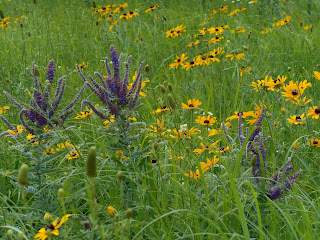Tell me when to stop -- in order to have a successful garden we must have highly-amended soil. That soil should be a rich, puffy loam that smells like a damp woodland. Such soil will need regular amounts of fertilizer, and it wouldn't hurt to water it every two days. Additionally, a constant layer of wood mulch will not only add more organic matter and help plants grow, but it will help the garden be more aesthetically pleasing.
Mulch for landscapes was created as a byproduct of the timber industry, a way for them to make more money selling the scraps they had no consumer for. We go to nurseries and big box stores buying bags of mulch, and then bags of topsoil; who knows where that topsoil is from, how it was gathered (destructively is my bet), or how it's going to help / hinder the soil life you have now in your landscape. The best mulch I know of is living, breathing, pollinator-producing green plants structured in such a way as to mimic natural ecosystems in nearby wilder areas.
If you have clay soil I want you to fall in love with it. I want you to stop working against it, seeing the stuff as imperfect. We already have enough problems perceiving the natural world as imperfect, needing to be "improved" upon; what happens when you work with what you have? What joy, peace, and centering purpose arises when you celebrate the miracle of clay soil and thickly-planted landscapes? What happens when you realize that large chunks of the planet have clay soil and, wouldn't you know, thriving ecosystems (including tons of plants) growing very well?
Clay soil is high in organic matter. Its structure helps it hold on to more nutrients and for longer periods, reducing the need for fertilizer and amendments. It's also great at sequestering carbon. Link here to read more on this miracle soil, and strategies to work harmoniously with it.

No comments:
Post a Comment